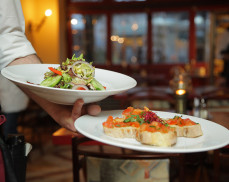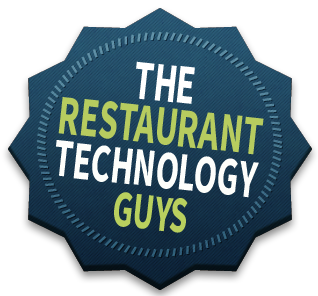
Running a restaurant is “the dream” for most people. Whether it’s selling food from a passed-down recipe or starting a food truck, running a restaurant always seems the most attractive business option. The reasoning behind it is simple; people need (and love) food.
However, anyone who runs a restaurant knows it’s not that easy. Several factors can influence a restaurant business, not to mention the constant competition. According to the National Restaurant Association, roughly 60,000 restaurants open every year. Worst of all, it seems the larger restaurants are always ahead, simply because they can afford it.
But not all the news is bad. In fact, with the right positioning, your business can gain an advantage to beat competitors both within your league and outside of it.
What is a competitive advantage?
In business terms, this is your USP (Unique Selling Point). As a restaurant, it’s simply what makes you stand out from the restaurant next door. This can be the food you sell, the culture of your restaurant, and even the location. Whatever your USP is, it’s important that the restaurant addresses the needs of your target audience or your demographic. Several businesses fail because they bring something really unique to the table, but not at the right location or to the right audiences. Before your competitive advantage is set outwards, it is something that needs to be addressed inwards first.
Once you have identified the question of “what makes you unique”, make sure that your restaurant reflects that entirely. A USP isn’t a trade secret, in fact- it should be the opposite. Every customer should know what your restaurant’s USP is, and this should be a factor to drive them to choose you over your competitors. This is taking your competitive advantage to the next level, which is sustainability. Having a sustainable competitive advantage cements your position in the industry.
What factors add competitive advantage?
There’s no need to overthink this one. What made you start a restaurant in the first place? Did you want to serve nachos with 50 types of dips? Or maybe you thought a Tarantino-themed restaurant would be the best hub for movie buffs? Businesses have personalities. A common occurrence that occurs is over time, your business personality may have changed. You may have lost customers or shifted to a different location. Your business vision may have transformed. That’s certainly not a bad thing. It means it’s time to consider how your business advantage has changed as well.
Culture: The culture of your restaurant is defined by its purpose, and luckily this doesn’t need soul-searching. What goals do you have in mind for your restaurant? Do you have a customer base target you hope to achieve or a level of fame you hope your restaurant to reach some years down the line? Make sure your culture is reflective of that. The culture of your restaurant is defined by the people you hire, the food you make and the way you position and sell your business. If you want to be the speed-dial caterer for events and parties, make sure you’ve got the well-equipped kitchen and staff for it. If your restaurant is fun and outrageous, create a marketing strategy that reflects that. Hire the right staff, always have adequate restaurant and bar funding on hand and build a good brand reputation.
Restaurant Branding: As mentioned above, make sure your USP isn’t kept hush hush. Flaunt it, through your brand. Ask yourself if your business brand conveys what your restaurant sells, the emotions of your brand, it’s culture etc. You’ll be amazed how much your logo alone can convey to the customer. Shapes, colors and the overall design and structure of your brand can influence the psychology of your potential customers. As a business owner, it’s understandable if a brand design isn’t something you’re familiar with. Luckily, brand agencies are available everywhere and can help you figure out your restaurant theme and palette.
Consistent Quality: Your business culture and branding can transform. It’s healthy for a business to adapt to the changes in the environment, but this must only reflect internally. Your chefs may change and your waiting staff may vary but the quality your restaurant delivers must stay constant. This is a crucial factor in why franchises and larger restaurants succeed. Ensure your restaurant has a high standard of quality and consistently delivers this. Restaurants are always riddled with kitchen inspections and sanitary procedures, so make sure the food delivered at the front-end equals or surpasses the quality maintained at the back-end.
Establishing a competitive advantage:
Business barriers in place: The factors of your competitive advantage look internally while establishing it faces outwards. Imagine your business barriers as a fort, and your USP is the bricks that built it. The fort is armed by the pricing of your dishes, the menu layout, the versatility of your restaurant (do you cater outside and deliver home), the location of your restaurant etc. These barriers decide the positioning of your restaurant above or below your competition and prove how sustainable your USP actually is. If your advantages can be replicated, rely on low pricing, or if it isn’t relatable, you may have to plan and rebuild your restaurant fort.
Customer Feedback: Several restaurant owners make it a point to meet with each customer personally to ask their feedback. While this presents a great engagement opportunity with your customers, this creates two challenges. The first is that it’s hard to record or keep track of the feedback you receive. Your customers may have given you a suggestion that you promised to get to later, and forgot. The second is honest suggestions and feedback are hard to come by when asked orally. Sure, it’s music to the ears when they tell you they love your restaurant, but the numbers are always reflective of their true opinions. The solution for both of these problems is simple record the customer feedback. This could be in old-fashioned paper and pen style or online. Either way, let your customers express their ideas and go through each one carefully. If possible, contact the customers who provided valuable suggestions, and thank them. Let them know that you take their ideas very seriously and intend to implement it. This is a good strategy to ensure customer retention.
Ultimately, restaurant businesses go through ups and downs like several other businesses. Restaurants have an upper hand in defining their purpose and competitive advantage over other businesses. Re-assess your business periodically and consistently build your USP. The more efforts you put into this, you move two steps ahead of your competition until eventually, you find yourself at the top of your industry.
